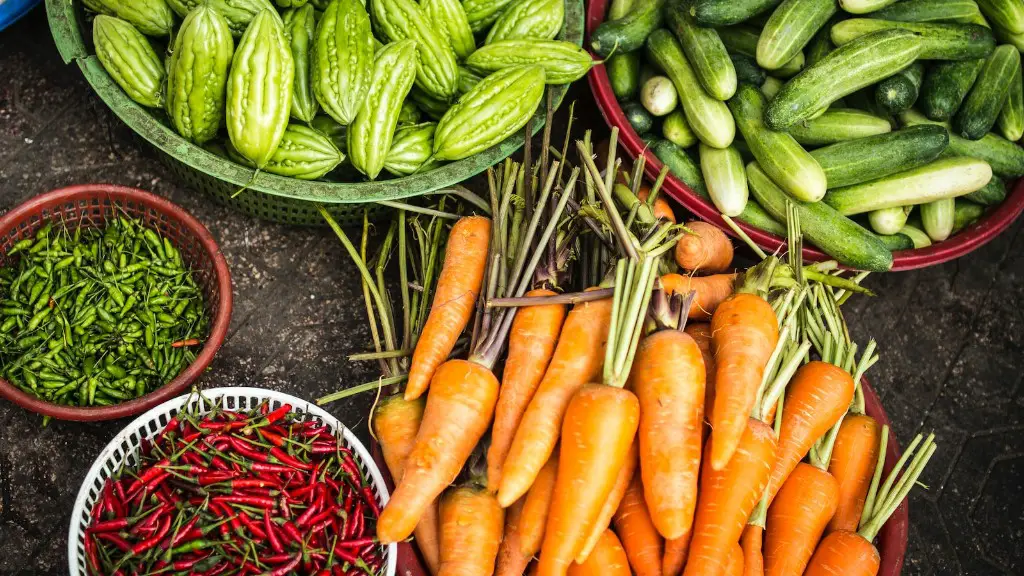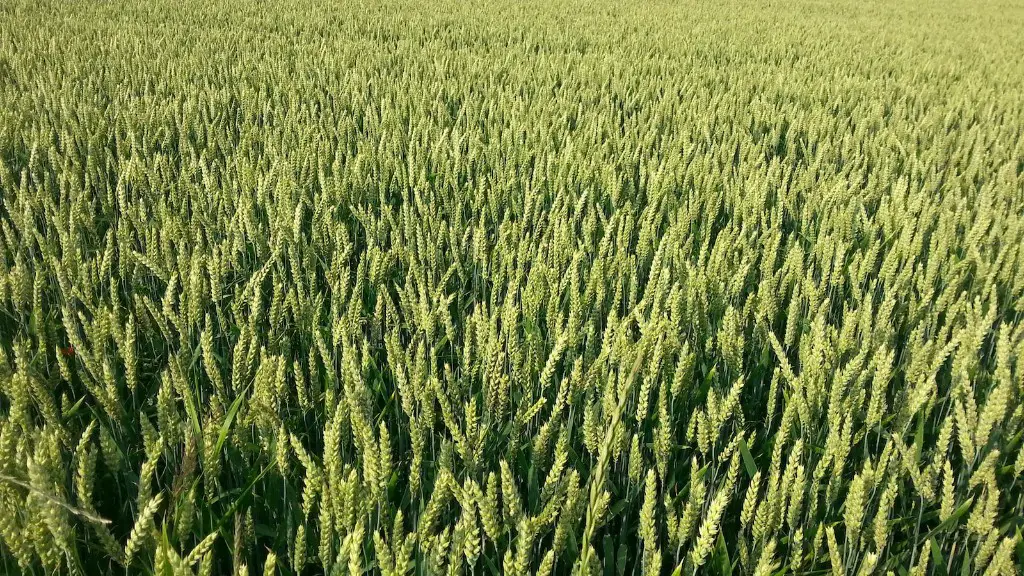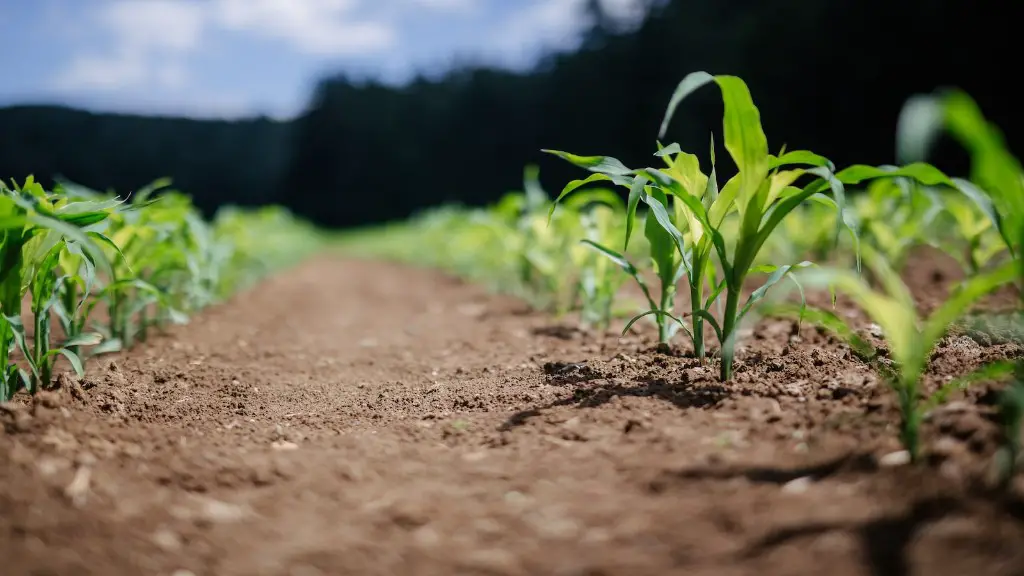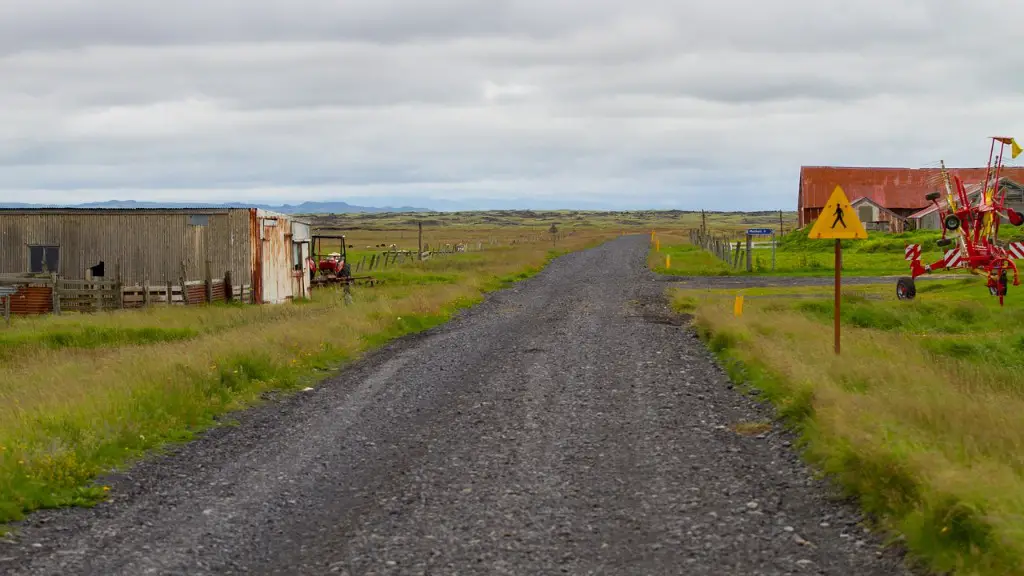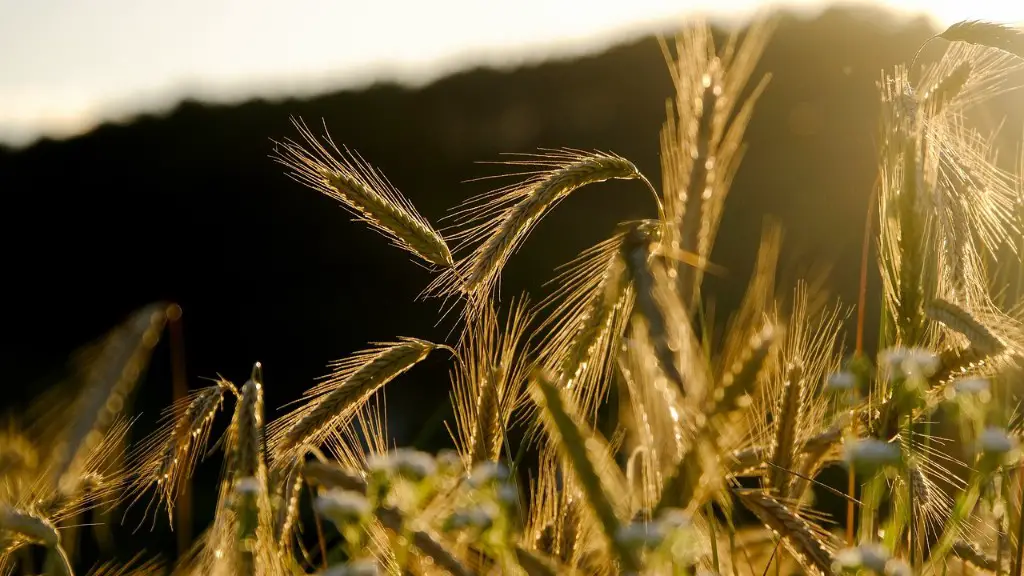Agriculture is a vital element of food production and has the potential to create a surplus of edible produce. It has been used for centuries to ensure the food security of people all around the world, but recently it has become even more of an integral part of the food system. By carefully managing the land and its resources, agricultural practices can result in an abundance of food, leading to a surplus.
Organic farming methods such as crop rotation, cover cropping, companion planting, and utilizing natural pest control can dramatically increase crop yields. Rotating crops from one season to the next helps to maintain soil fertility, while the use of cover crops can provide additional organic matter and nitrogen. Furthermore, companion planting can work to bring beneficial insects and natural pest control which helps to greatly reduce crop losses. All of these practices together can help to maximize agricultural production, ensuring a surplus of food.
In addition, irrigation plays an important role in increasing agricultural productivity. The use of efficient and sustainable agricultural practices such as drip irrigation, along with improved access to water resources, can help to maximize crop yields while conserving water. Combining these practices with traditional water management methods can dramatically reduce crop losses due to drought and increase the agricultural production.
Modern agricultural technologies have also been key to the production of a surplus of food. For example, the use of genetically modified organisms (GMOs) in agriculture has enabled farmers to produce crops with higher yields, pest and disease resistance, and increased nutrition. Furthermore, the use of mechanization, automation, and robotics has greatly improved agricultural efficiency, leading to higher yields and less labor input.
Finally, the use of digital technologies such as precision agriculture and remote sensing have enabled farmers to quickly access and analyze data about their crops and soils, allowing them to make informed decisions that can lead to better management practices and ultimately more productive agricultural outputs.
How Diversity in Agriculture Leads to a Surplus
Agricultural diversity is essential for a successful, productive, and sustainable food system. Planting a variety of crop species and varieties ensures the protection of the food system against losses due to pests and diseases, while also providing more options for food choice. Furthermore, developing an integrated, diverse agricultural system can help to maximize yields, as different crops will be able to take advantage of different soil conditions.
Traditional, agroecological cultivation practices, such as polyculture and intercropping, help to diversify agricultural systems, leading to a surplus of food. Polyculture involves the cultivation of multiple crop varieties, while intercropping is the practice of planting two or more crops in close proximity. These methods help increase soil fertility and efficiently utilize resources. Furthermore, polyculture and intercropping also provide food diversity, such as different varieties of fruits, vegetables, and grains.
However, crop diversity is not only beneficial to the production of food. Planting a variety of crops can help attract beneficial insects and birds, improving the health of the agricultural system. For example, the presence of insect-eating bird species can significantly reduce crop losses due to pests. Moreover, different crop varieties can help to control diseases and enhance soil fertility.
In addition, cultivating a variety of crops helps to ensure food security even in cases of extreme weather events. The diverse genetic traits of different crop varieties make them more resilient to changing environmental conditions. For example, some varieties of maize can survive freezing temperatures and excessive moisture, while others can tolerate drought and heat.
Finally, crop diversity provides farmers with a larger range of marketable products, allowing them to maximize profits while promoting sustainability. Different crops have different market values, allowing farmers to focus on those crops that can generate the most income. Furthermore, choosing the right crop can help farmers to shift away from monoculture production and reduce their reliance on inputs such as chemical pesticides and fertilizers, leading to improved environmental sustainability.
The Role of Government Policy in Agricultural Surpluses
Government policy can act as an important tool in encouraging agricultural production and creating agricultural surpluses. Government incentives such as economic subsidies and tax reliefs can help to reduce the costs associated with agricultural production, allowing farmers to produce more food at a lower cost.
In addition, government policies such as land redistribution and agricultural land consolidation can help to increase agricultural productivity. Land redistribution involves the reallocation of agricultural land to smallholder farmers, providing them with access to fertile land and other resources needed for agricultural production. Consolidation of agricultural land involves reducing the average size of the plot, allowing for greater efficiency in terms of management and resource utilization.
Furthermore, government agricultural research and development initiatives can help to develop new technologies and practices that can lead to higher agricultural productivity and improved food security. Government support for research and development can also help to provide access to innovations such as improved crop varieties and mechanized farming equipment.
The government can also play an important role in providing access to resources such as water, fertilizer, and pesticides. Better access to these resources can help to increase crop yields and reduce crop losses, leading to improved food security and an agricultural surplus.
Furthermore, the government can help to provide agricultural extension services to farmers, educating them on best practices and the use of efficient technologies. Additionally, government support for marketing and distribution of agricultural produce can help to ensure increased availability of food. This can ensure that surplus produce does not go to waste and can be efficiently distributed to those who need it the most.
Importance of Storage in Generating Agricultural Surpluses
The importance of storage in generating agricultural surpluses can hardly be overstated. By ensuring the proper storage of harvested crops and seeds, farmers can keep their produce fresh and edible for longer, thereby increasing the availability of food and reducing losses.
Post-harvest storage techniques such as natural air drying and sun-drying, combined with the use of chemical preservatives, help to reduce moisture and minimize spoilage. Fermenting and canning also help to preserve food, allowing it to be stored for extended periods of time. Furthermore, proper storage facilities such as silos and warehouses can protect crops from pests and other external factors that can lead to spoilage.
In addition, proper storage also helps to reduce post-harvest losses, ensuring that farmers are able to make the most of the produce they are able to cultivate. Improved storage reduces the need for frequent harvest cycles and ensures that more food is available for consumption, leading to increased food security and an increase in the surplus of food.
Storage also provides an important incentive for farmers, as it allows them to store their produce for a longer period of time, often with the assurance of a higher price at the end of the storage period. This helps farmers to maximize their profits, as they will be able to sell their produce at the market when prices are higher and when demand is greater.
Finally, proper storage helps to ensure food quality and safety, as improved storage techniques help to control the growth of spoilage organisms, ensure that the food is kept fresh and safe for eating, and reduce the threat of foodborne illnesses.
Food Processing and its Impact on Generating Surpluses
Food processing plays an important role in maximizing agricultural production and creating agricultural surpluses. By processing food, agricultural produce can be preserved and stored over extended periods of time, allowing more of the food to be consumed and reducing the risk of spoilage.
Food processing also helps to improve food safety by reducing the risk of contamination. Preservation techniques such as freezing and canning help to destroy spoilage microbes, while technologies such as ultraviolet radiation help to reduce the risk of bacterial contamination. Furthermore, food packaging and labeling can help to ensure that only safe and wholesome food reaches the consumer.
In addition, food processing helps to improve the nutritional content of foods, enabling farmers to provide more nutritious food for consumers. Processing techniques such as milling and fortification can help to change the nutritional content of the food, enriching it with minerals and vitamins and helping to reduce the spread of malnutrition.
Food processing can also help to increase the availability of food, as processed foods have a longer shelf life than unprocessed foods. Moreover, processing can make food available in new forms and flavors, increasing the diversity of food available to consumers.
Finally, processing food can help to reduce waste by allowing more of the agricultural produce to be used. Processing foods can add value to them, allowing them to be used for a longer period of time, and reducing the need for frequent harvesting cycles. This also helps to ensure that food surpluses are generated and utilized instead of going to waste.
Role of Trade in Generating Agricultural Surpluses
Trade is an essential element to food security, helping to ensure the availability of food and the production of agricultural surpluses. Trade helps to reduce price volatility by ensuring adequate food supply, while also helping to spread risk.
The elimination of trade barriers, such as tariffs and quotas, can help to increase the availability of food and reduce food prices, leading to increased access to food and an increase in agricultural production. Furthermore, regional and international trade agreements can help to open up new markets for agricultural produce, enabling farmers to maximize their incomes.
In addition, improved infrastructure such as roads, ports, and storage facilities can make it easier to transport agricultural produce, allowing farmers to swiftly move it from one place to another and reducing losses due to spoilage. This can also help to create a surplus of food, as the produce will be able to reach consumers in time.
Moreover, trade has the potential to open up access to new technologies and markets. It can help to increase the availability of improved seed varieties, mechanization and automation technologies, and other innovations that can lead to improved agricultural outputs. Trade can also help to improve access to inputs such as chemicals, fertilizer, and fuel, allowing for increased agricultural production.
Finally, by increasing the availability of food, trade helps to ensure that food surpluses are generated, stored, and distributed in a safe and efficient manner. This helps to reduce hunger and malnutrition, while also improving sustainability and food security.
